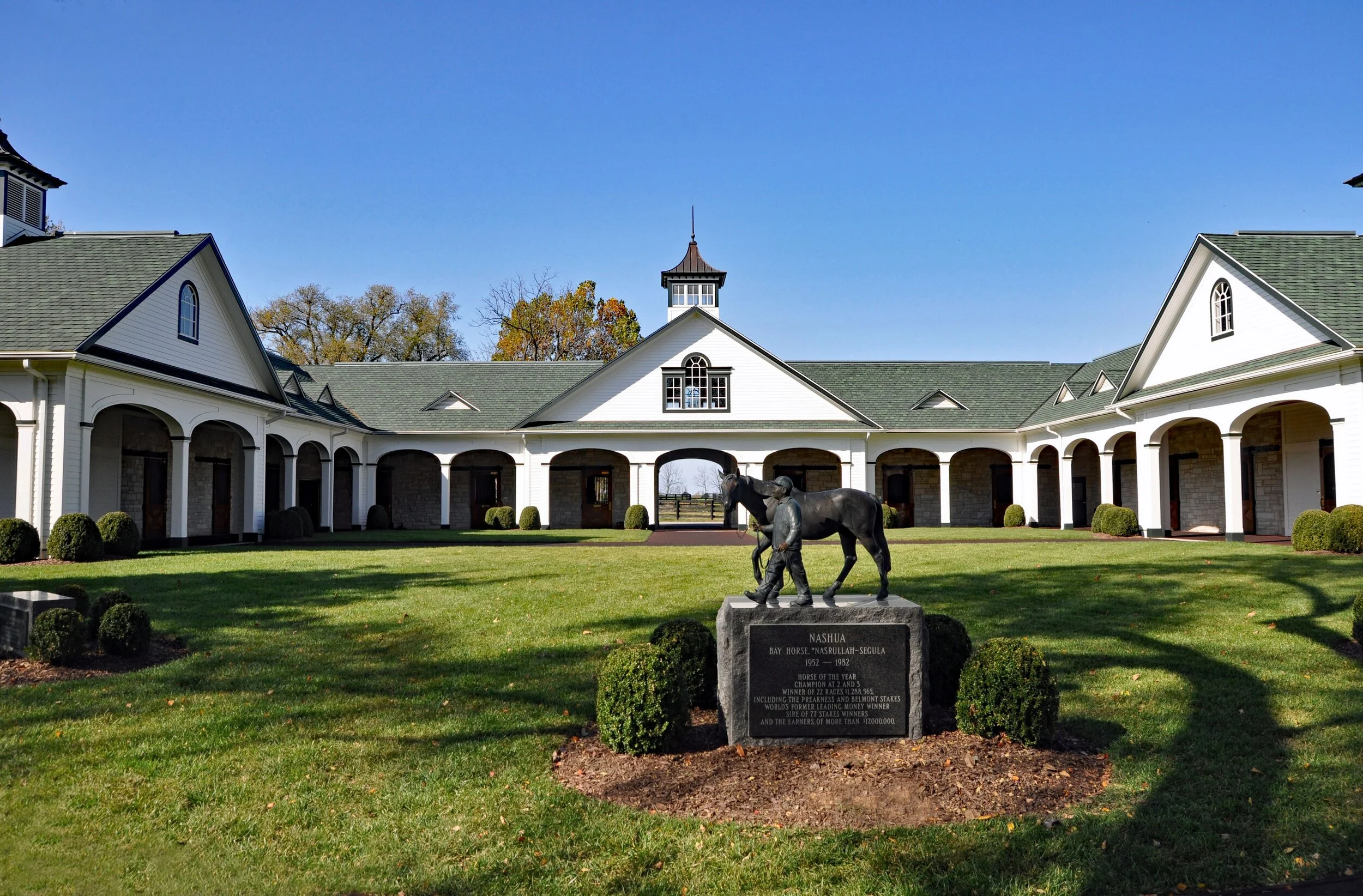
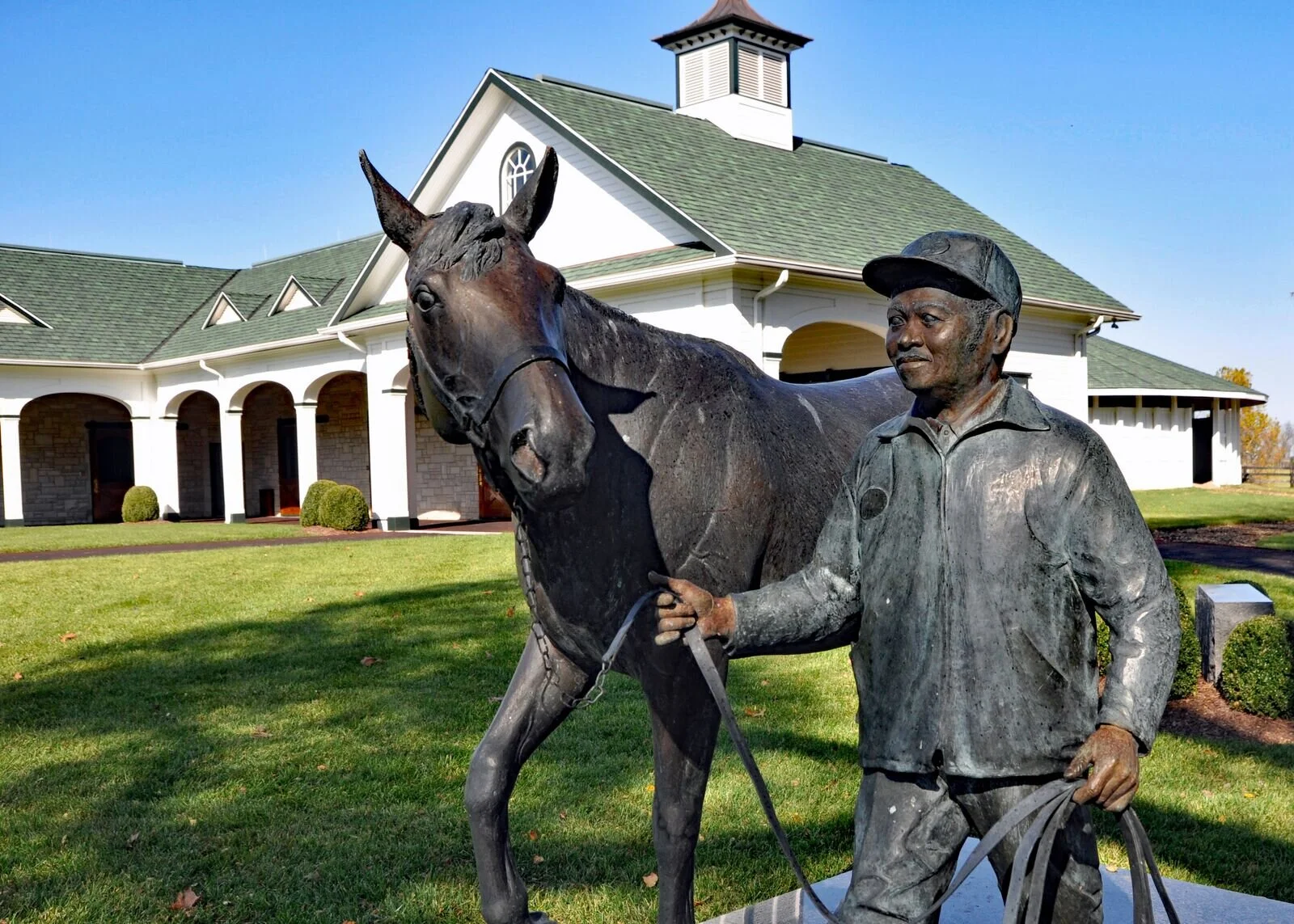
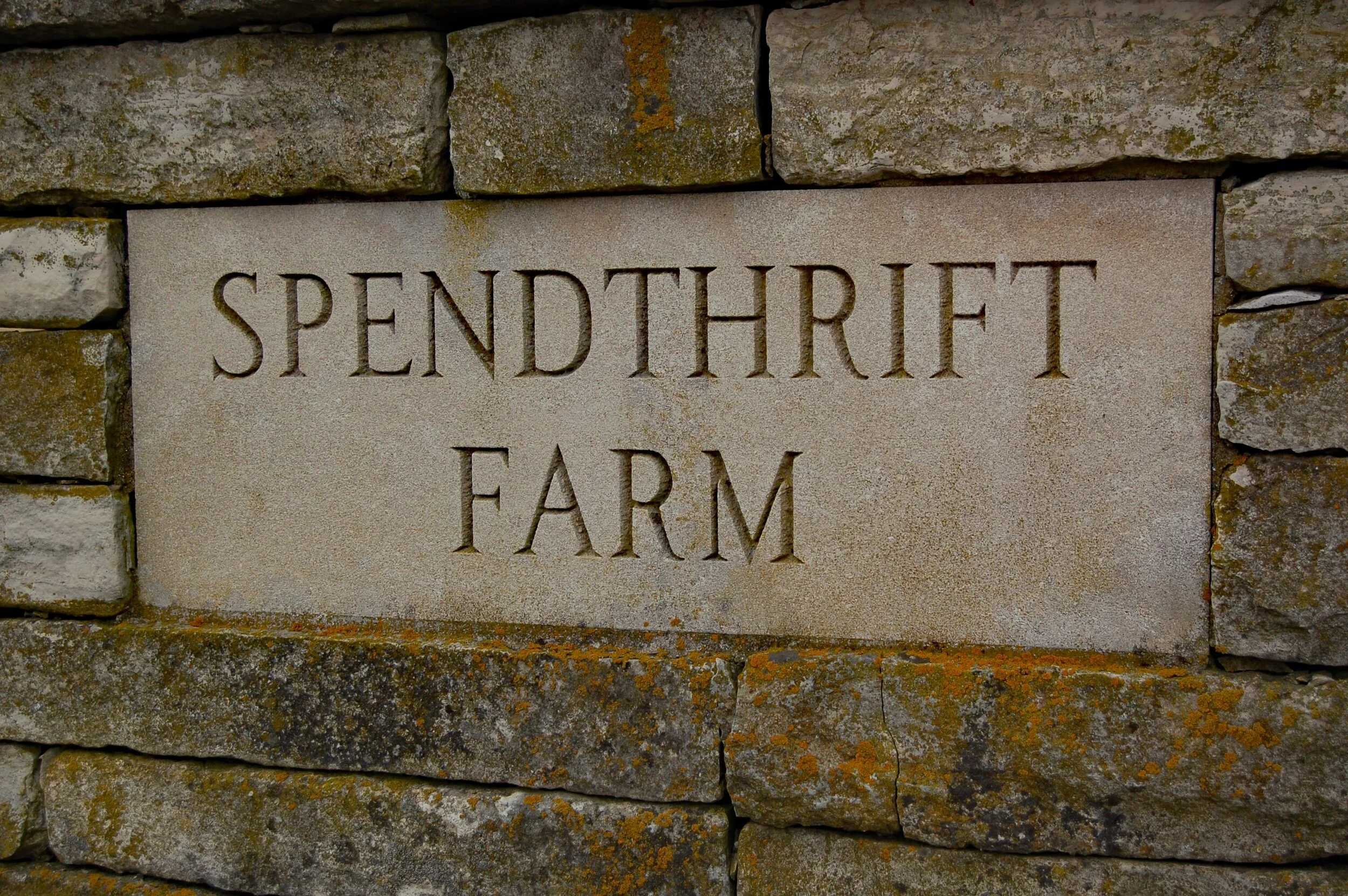
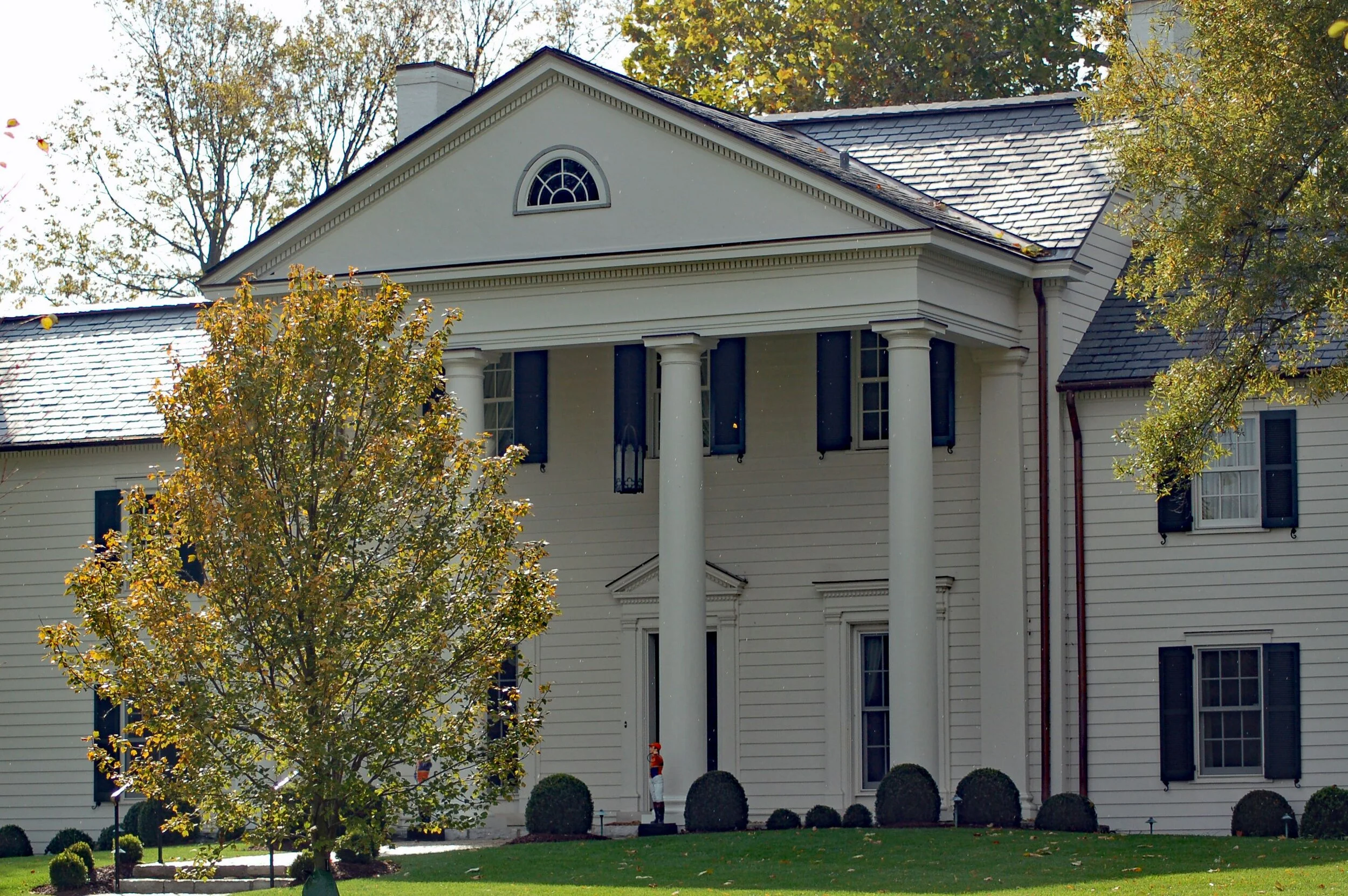


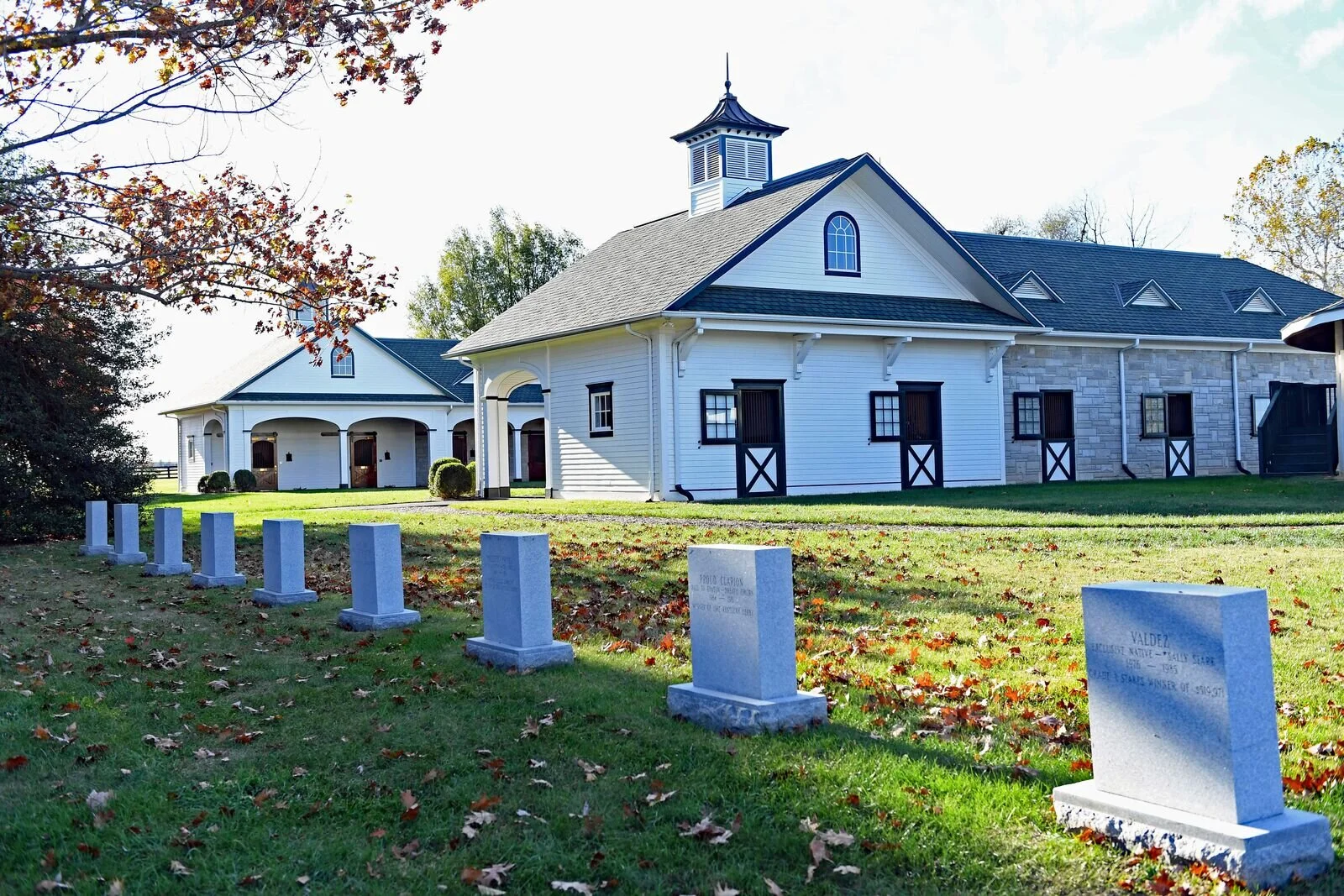
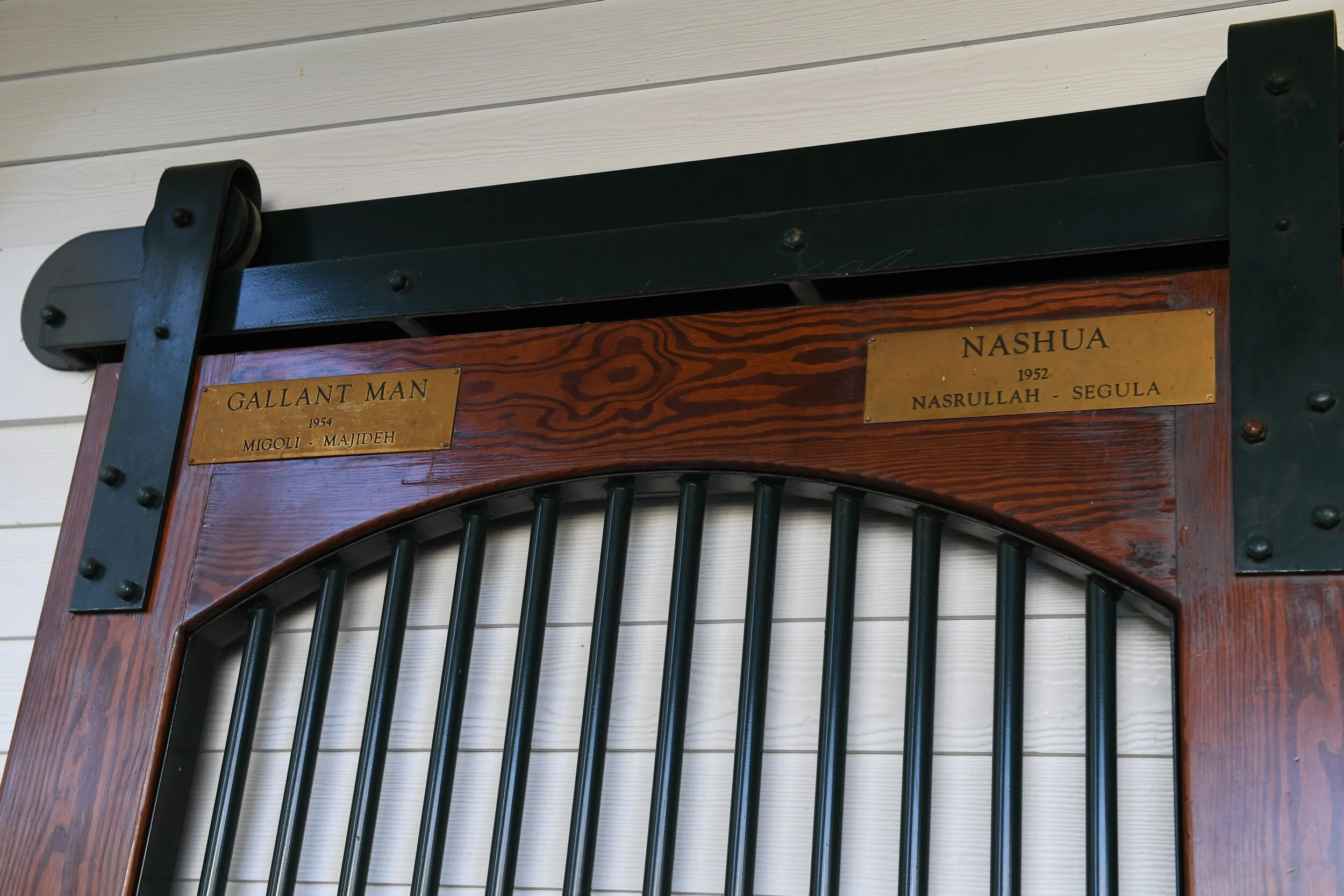
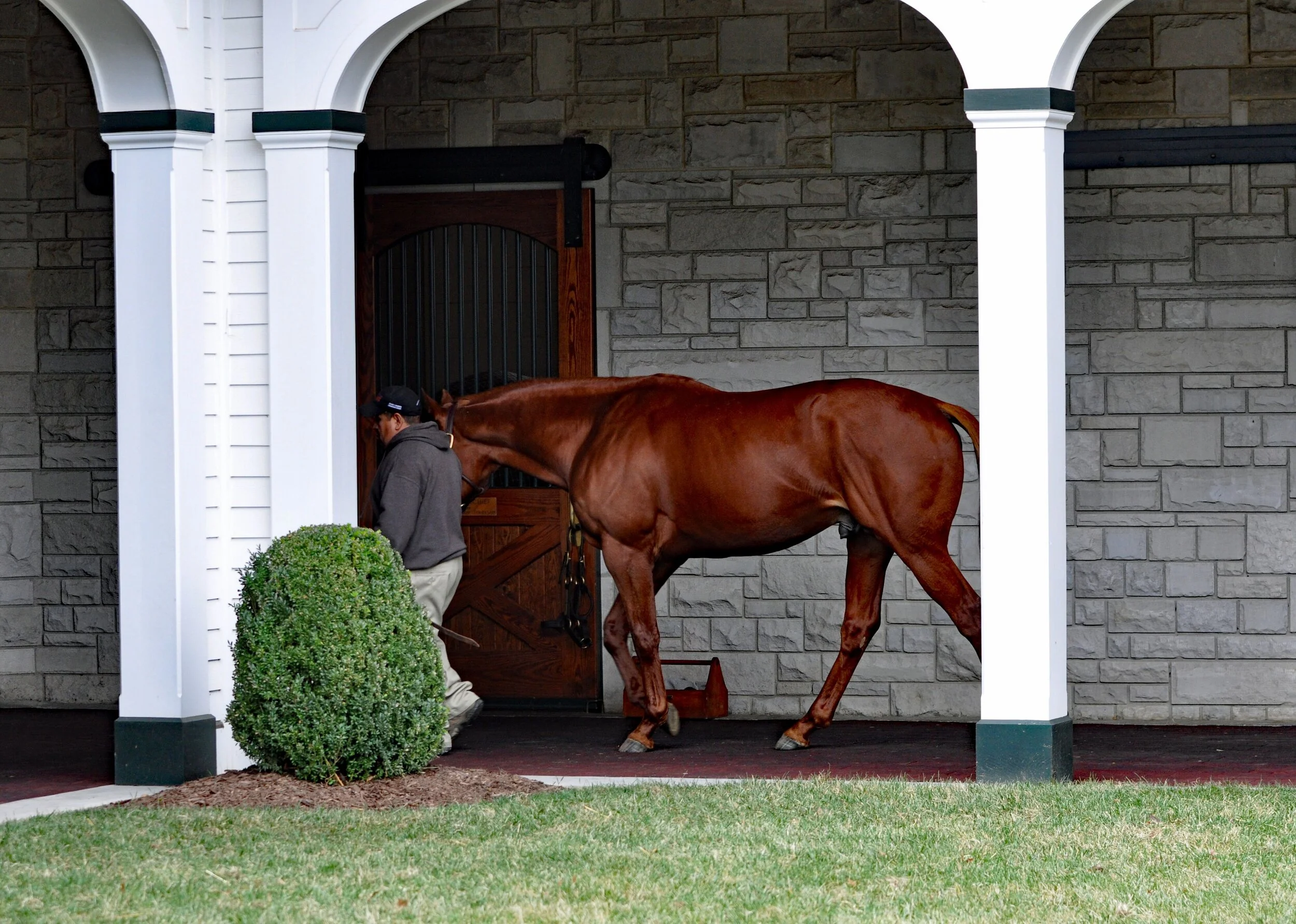


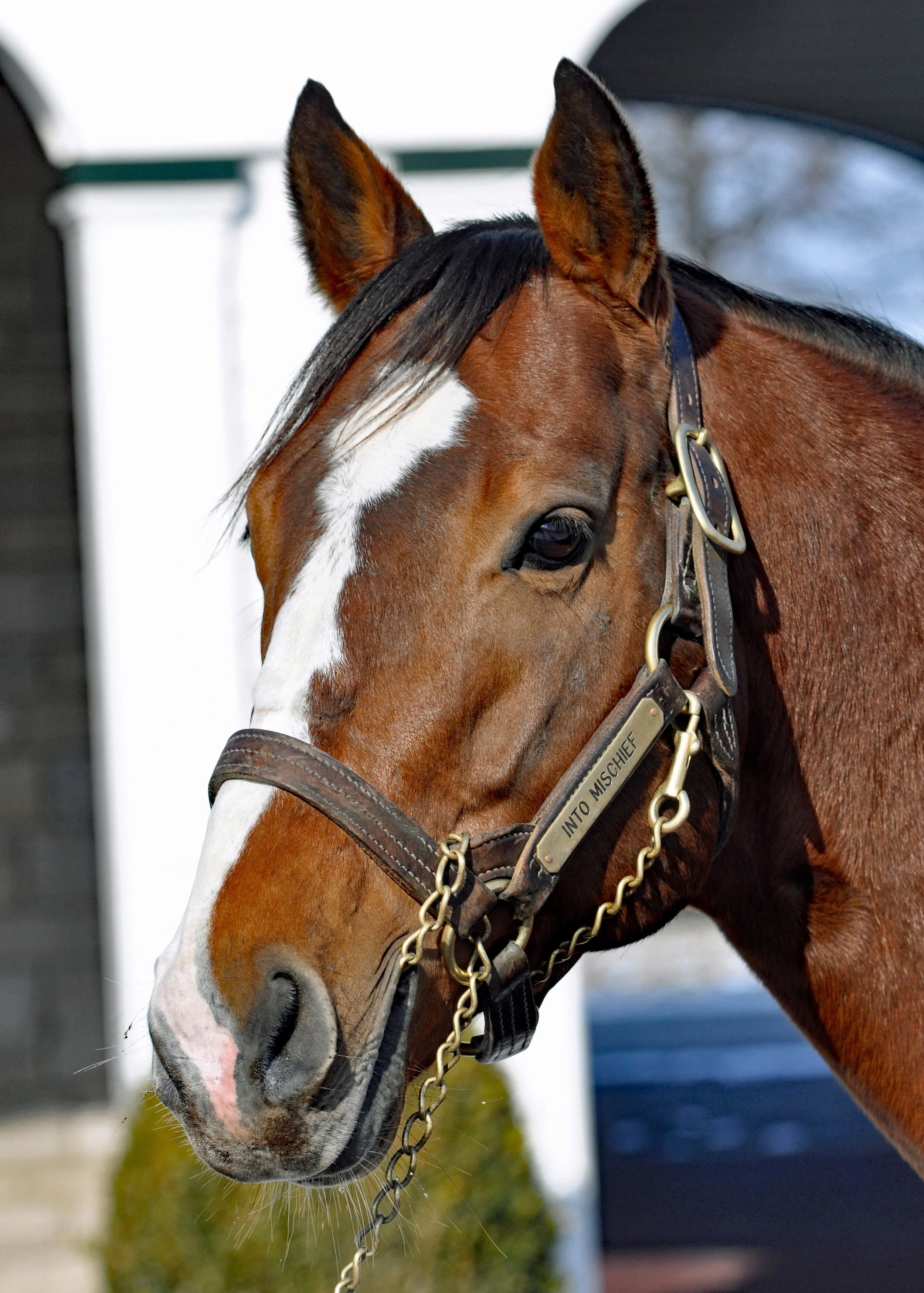
Nashua Motel at Spendthrift Farm
By: Tom Ferry
Nashua.
For 26 years, beginning in 1956, he was Kentucky’s star attraction. It is estimated more than 20,000 visitors came to see him each year.
In the late 1950s, the great racehorse Nashua was so valued as a stallion that Spendthrift Farm satisfied his insurance requirements by constructing an unprecedented U-shaped barn made of metal and sandstone. Today, the “Nashua Motel” symbolizes the spirit of a legendary horse, two visionary men, and a farm that rose from the ashes and overcame adversity to become one of the most successful Thoroughbred breeding operations in the world.
During the Golden Age of American Thoroughbred racing, from the mid-1960s through the end of the 1970s, there were three farms who produced on both the racetrack and in the breeding shed that stood above the others: Claiborne Farm, Gainesway, and Spendthrift. In 1937, 36 year-old Leslie Combs II founded Spendthrift Farm when he used a $600,000 inheritance from his grandmother to purchase 126 acres of land just north of Lexington, Kentucky. The farm was named after the great stallion once owned by Comb’s ancestor Daniel Swigert of Elmendorf Farm.
In 1947, Combs brought together a group of 20 partners who invested $5,000 each in the stallion Beau Pere. This created what we know today as modern racehorse syndication. Combs would become a major pioneer in the racing industry—this was just one of several of his innovative actions. In 1955, he changed the Thoroughbred breeding world and the fortunes of Spendthrift Farm forever when he put together the first $1 million syndication for a horse.
And it was no ordinary horse.
In 1955, the great three year-old Nashua lost the Kentucky Derby (G1) by one and one-half lengths to the west coast superstar Swaps, but came back to capture both the Preakness (G1) and Belmont Stakes (G1). Swaps did not compete in the latter two jewels of the Triple Crown due to inflammation in his right forefoot.
This set the stage close to three months later when the two best horses of their generation met in a $100,000 winner-take-all match race on August 31, 1955 at Chicago’s Washington Park. Nashua, owned by William Woodward Jr’s Belair Stud, went off at 6-5 odds, but the racing public made Swaps the 3-10 favorite, coming off of four consecutive and impressive wins during the summer. The match race was no contest. Nashua took the lead at the start and was never threatened by Swaps, pulling away to win by six and one-half lengths. Both horses ran the following year at age four but never met one another again on the track. One of the greatest rivalries in the history of Thoroughbred horse racing consisted of a mere two races.
Nashua was put up for sale after his owner, William Woodward, Jr., was shot to death in his Long Island, New York, bedroom by his wife, who mistook him for a burglar. Executors liquidated Woodward’s assets, including his numerous Thoroughbreds, and this led to Leslie Combs II and his syndicate partners purchasing Nashua for a then-record $1,251,200. The horse retired to Spendthrift at the close of 1956 with earnings of $1,288,565 and 22 victories from 30 starts.
Initially Nashua was housed in a traditional wood frame barn at the farm, but Spendthrift was informed Lloyd’s of London would not insure the million-dollar horse in a wooden structure due to fire concerns, so plans were put in place to construct the iconic “Nashua Motel”. The modern, squared-off, U-shaped barn made of steel and stone consisted of 16 stalls encircling a spacious and aesthetic courtyard. And for the next 25 years it was home to the great horse who put Spendthrift on the map. In his lifetime, Nashua sired 85 stakes winners and his offspring earned more than $16 million.
Much like the beloved relationship between the great Man o’ War and his Faraway Farm groom Will Harbut, one cannot tell the story of Nashua without mentioning Clem Brooks. The two were paired together for more than a quarter- century until Nashua’s death in 1982. Countless visitors recall memories of Brooks bringing the horse out into the courtyard and enthralling audiences with animated stories and even sharing horseshoes and other souvenirs with admirers. Known around the barn as “Mickey”, Nashua would pose for photos regally with his head held high and gave every indication he knew how great he was.
On July 18, 1984, a half life-size memorial bronze statue of Nashua accompanied by Clem Brooks was unveiled at Spendthrift. The statue, created by sculptor Liza Todd – daughter of Elizabeth Taylor – stands over the grave of the horse and is a fitting centerpiece for the courtyard in front of the Nashua Motel.
From the late 1950s through the mid 1980s, Spendthrift bred and/or was home to some of the greatest racehorses the sport has ever witnessed, including nine Kentucky Derby winners and two Triple Crown Champions, Seattle Slew and Affirmed, as well as the incomparable Mr. Prospector. Above each of the Motel’s stall doors are plaques which call out the legends who once inhabited these sacred spots. This includes the likes of Gallant Man, Raise a Native, Sham, Exclusive Native and Swaps, who spent five seasons at Spendthrift with his rival Nashua, among others.
After Spendthrift went public in 1983, the farm fell on hard times. A number of lawsuits caused by a collapse in the Thoroughbred breeding market led to Spendthrift declaring bankruptcy in 1988. Leslie Combs II died in 1990 at age 88 and ownership changed hands several times after that until 2004 when Spendthrift was purchased by B. Wayne Hughes, the billionaire co-founder and chairman of the self-storage company Public Storage, and he continues ownership to this very day. A racehorse owner since 1972, Hughes spearheaded Spendthrift’s return to prominence by instituting incentive programs like “Share the Upside” and “Safe Bet”, which helps the farm promote their stallions while also providing great value to breeders.
Today, Spendthrift Farm thrives and has grown to over 1,200 acres, and is home to leading sires Malibu Moon, Into Mischief and four-time Champion mare, Beholder. The Nashua Motel, once falling into disrepair, has been beautifully refurbished. Modern racing stars such as Mitole, Vino Rosso and Goldencents now occupy the same stalls once lived in by Seattle Slew, Affirmed and, of course, Nashua.